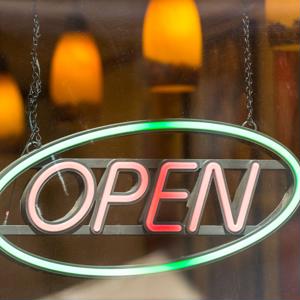
Do restaurants really have a 90 percent first-year failure rate?
March 19, 2018 6:34 pm Leave your thoughts
Restaurants are like retail outlets at the mall: They can seem like mainstays, but before you know it, they can be gone by your next visit, replaced by another with seemingly little warning. It's part of the reason why "making it" in the restaurant business is no simple task. Indeed, some studies suggest the failure rate for eateries can be as high as 90 percent – in the first year of business.
But is that really true? If only 1 in 10 restaurants remain open 12 months after serving their first meal, that's a huge risk to bother investing the time and money and attention that goes into making a dining establishment a place people will want to come to again and again.
It turns out, however, that the 90 percent failure rate may be greatly exaggerated. And it isn't just one analysis that balks at this apparently misleading statistic, but several.
One of which was done in 2014. As reported by Forbes, two economists wanted to find out for themselves about restaurants' fiscal viability after year one, and collected figures from the Bureau of Labor Statistics that had details on 98 percent of businesses in the U.S. Their prime focus were restaurants, specifically those that only had one location.
"Several studies debunk the notion restaurants fold frequently in year one."
17 percent of restaurants fail in first year, study argues
What did they find? Although there was a double-digit failure rate, the chances were just 17 percent, far removed from the 90 percent stat that is so frequently referenced. What's more, their susceptibility to closing was actually less than other single-establishment businesses that provided services (19 percent).
"Perhaps due to the visibility and volume of restaurant startups, the public perception is that restaurants often fail," Forbes quoted from the economists' study. "However, as shown in this paper, restaurant turnover rates are not very different from startups of many other different industries."
The BLS data-based study isn't the only study that calls the 90 percent restaurant failure rate into question. Another one – undertaken by researchers from Cornell University – argued restaurants close in the first year only 26 percent of the time, again among independent restaurants. The principal investigators of the analysis also noted that – contrary to popular belief – internal factors had more to do with restaurants failing than external, such as poor sales, regulatory strictures or competition.
"In particular the manager's ability to balance family matters with the development of the organization is critical," the authors wrote.
No one knows for sure how or why certain statistics get blown out of proportion and assumed to be true. The Cornell University study noted the restaurant failure rate statistic originated from a prominent 2003 television commercial by a major credit card company that aired throughout the year.
Failure often stems from inexperience
Even if the statistic is wildly exaggerated, this doesn't suggest that starting a business in the restaurant industry is a piece of cake. Robert Irvine, talk show host, chef and long-time Food Network contributor, told Business Insider people all too often underestimate the labor that's involved, especially in the early going.
"So many of the restaurants … are in their current situation because of inexperienced, but well-meaning, owners," Irvine explained. "Potential restaurateurs do not realize or appreciate the specific set of demands that come along with owning and running a restaurant. Once realized, it is often way too late."
Furthermore, restaurateurs must wear several different hats, beyond the chef cap. For example, in addition to ensuring dine-in and takeout customers get a product that's consistent and meets their expectations, there's also the dueling tasks of keeping tabs on inventory, maintaining different staffs (kitchen, hosts, dishwashers and servers), food costs and adjusting menu items to keep selections fresh. There's also the compliance elements to consider, both those in the beginning and ongoing, like liquor licensing and sanitation protocols.
Becoming a business owner is a challenge, especially if it's in an uncharted industry you're not familiar with. Here at the Hudspeth Law Firm, we have the pragmatic advice and strategic planning expertise that can help you overcome challenges in your first year of operation. Whether it's regulatory hoops, liability concerns or the day-in, day-out nature of maintaining a business, our services just may be the missing ingredient you've been looking for.
Categorised in: Starting a Business in Arizona
This post was written by





